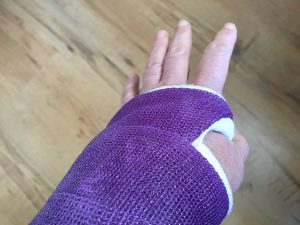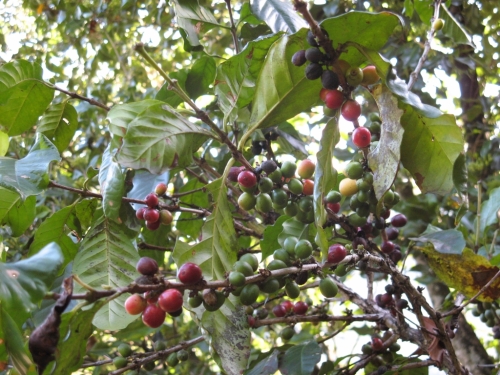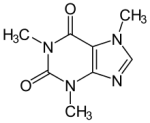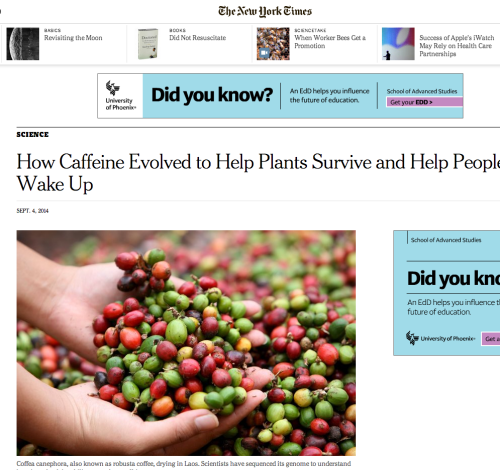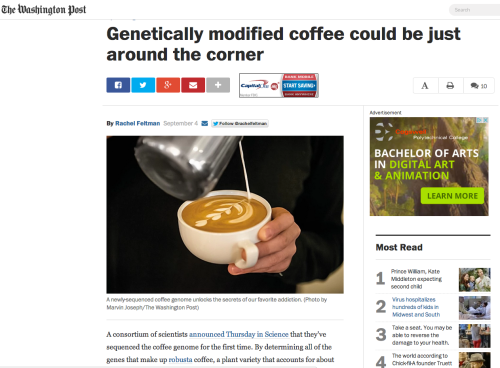
The Bassler Lab

Bonnie Bassler
We’ve just concluded the ninth annual Biology Leadership Conference (BLC) in South Carolina and what a weekend it was! Our keynote speaker, Dr. Bonnie Bassler , gave the meeting a rip-roaring start with a research talk about her lab’s work with bacteria, figuring out how they talk to each other, and, as an outgrowth of that work, gaining insight into the evolution of multicellularity.
Bacteria, Earth’s earliest lifeforms, are single-celled organisms, covered with a membrane, and filled with cytoplasm that includes only one piece of DNA. Compared with humans and other mammals, they have very little genetic information (only a couple of thousand genes) with which to work. Their lives appear to be fairly mundane – they grow, divide and replicate.
As humans, our relationship, with bacteria is pretty interesting. Humans, like all organisms, are made up of cells – roughly a trillion cells that make up one human body. It turns out that you have 10 times more bacteria cells than human cells on and inside of you (there are roughly 40,000 species of bacteria in the gut alone!). In other words, you are really 90% bacteria. And if you look at the gene pool, those proportions become even more astounding. We know that there are 20k genes in the human being. Well, if you tally up all of that bacterial genetic material, you have 100x more bacterial genes, than human genes, in and on you. So, doing the math – you are only 1% human.

Bacteria R Us, illustration by Bryan Christie
But all of those bacteria are not just passive riders in and on your human form, they are very busy creatures. They provide an amazing repertoire of functions that you can’t do on your own – food digestion, educating your immune system, and vitamin production. They also cover you in an invisible film – a sort of body armor.
But we don’t hear much about all of those positive contributions. When we hear news about bacteria, it’s mostly bad news – lyme disease, toxic shock, or food poisoning – the myriad ways that bacteria make us sick.

Hawaiian Bobtail Squid
Dr. Bassler started as a postdoctoral fellow in the lab of Dr. Mike Silverman (from the Agoroun Institute, now retired), who had been working on a special kind of bacteria, Vibrio fischeri, that live in a mutally beneficial relatonship with a marine organism – the Hawaiian bobtail squid (pictured at left). This squid has a pristine, one-to-one symbiotic relationship with the bacterium Vibrio fischeri. The squid provides a safe and comfortable home, the bacteria provide light.
Here’s the story from the squid’s point of view: during the day, the squid buries itself in sand to avoid being eaten by predators. Good strategy. In this video you can see the squid’s camoflauge behavior. It comes out at night to hunt, but of course, it’s difficult to hunt in the dark. Fortunately, the bobtail squid has a specialized light organ, two glowing lobes, located on the underside of its body, loaded with (10 to the 12th cells per ml) bioluminescent bacteria. The squid’s ink sac works like a shutter, controlling the amount of light shining down, into the dark water below. The light organ and ink sac are controlled by a light organ on the squid’s topside, so that the bacterial light precisely matches the light coming from the stars and moon above. In effect, the squid counter-illuminates itself to avoid predation, while hunting. Together, the squid and its bacteria are the stealth bomber of the ocean.

Vibrio fisheri
From the bacteria’s point of view, the light organ is a safe haven, loaded with nutrients. The bacteria and the squid, as a pair, manage to avoid wasting valuable resources by only turning on the light when appropriate – that is, only at night, and only when there are enough bacteria around to make it worthwhile. The light is turned on by a sort of chemostat – the bacteria make and release a small pheromone (called an autoinducer). As they grow and divide, they sense the level of the autoinducer. A particular autoinducer level is the cue to turn on the light. In the morning, the squid pumps out most of the bacteria from its light organ – and the process resets itself.
The biochemical key to this beautiful process is this autoinducer. As the bacteria grow and divide, the molecule builds up precisely in proportion to the number of bacteria present. The bacteria use the autoinducer as a communication proxy – initiating a response (turning on the light), based on the detection of that chemical’s level. In effect, the bacteria are using the level of the autoinducer as a method for counting their number – or quorum sensing. It’s as if the bacteria vote chemically – and then turn on the group behavior.
The enzyme that makes the autoinducer freely moves in and out of the bacterial cell. The receptor that detects the molecule’s presence sits on the cell surface (like a hormone receptor). When the molecule reaches a certain concentration, it binds to the receptor on many bacterial cells, in the typical lock and key manner, and that binding action turns on the bioluminescence. Like a light switch.

Endosymbiosis
And here’s the interesting connection to the evolution of multicellularity. According to the endosymbiotic theory, early ancestors of eukaryotic cells engulfed and incorporated other prokaryotic cells. Eventually, the engulfed cell formed a relationship with its engulfer and became a cell living within another cell – an endosymbiont. In the same way, we can look at quorum sensing as an early version of development in complex, multicellular organisms. Turning on the light among hundreds of bioluminescent bacteria is similar to turning on hundreds of genes in a multicellular organism at a particular time. These luminescing bacteria perform their action in synchrony – behaving just like multicellular organisms when they do.
So what all are these bacteria doing with quorum sensing? Turns out, there’s a wide range of these autoinducer chemicals that participate in various bacterial group functions. To mention just two examples: such a chemical in P. aeruginosa is involved with production of virulence factors and biofilms and such a chemical in E. carotovora is involved with antibiotic production.
Quorum sensing helps bacteria to strategically time their invasions. When you think about it, it makes no sense from the bacterium’s point of view to kill the organism it has invaded. The better idea is to dribble out molecules and give the host a chance to mount an immune response so that the host and the bacteria can continue their relationship. For the bacteria, it is much better to wait, count itself, and then, when the numbers are right, mount a group assault and infect the host in such a way that both the host and the bacteria survive.

Bacterial community: biofilm on your teeth.
But it’s not as simple as one species of bacteria living in or on one host. Like all other organisms, bacteria live in complex communities, surrounded by many other bacterial species. Take for example, that thick film you feel on your teeth in the morning? There are roughly 600 species of bacteria at work, creating that lovely film for you each day. Imagine the “noise” with 600 bacterial species, sending out their biochemical signals. So, if bacteria live in these complex communities, surrounded with all of that biochemical noise, how do they take a census?
To answer that question, the Bassler lab went looking for genes. In the process, they found that there were really two signals. Two chemical signals (autoinducers 1 and 2) tell the Vibrio fisheri bacteria to produce light. But why two? Why is it useful to have two circuits to provide one line of information? To get to the bottom of that question, the Bassler lab made bacterial mutants with only one system, then collected their bacterial chemical output and applied it to bacteria with both systems. Using this method, they figured out that the second system was turned on by every species’ autoinducer chemical. In other words, one system allows bacteria to detect “self” and talk with their kin while the second system detects “other” and allows for interspecies communication.
The gene involved in interspecies communication is luxS and all of bacteria studied by Bassler’s lab have this gene. When the researchers collected the molecule produced by the luxS gene, purified it, and determined its structure, they found that every bacterial species made the exact same molecule. In effect, the chemical encoded by the luxS gene provides a common chemical “language”. The bacteria are, in a sense, “bilingual”. They can talk to each other, within their species, and they can talk across species. “Am I alone?” “Am I in a group?” “Am I winning or am I losing?”
The film on your teeth, mentioned earlier, is a complex, architected community. Bonnie speculates that there is most likely a vast chemical lexicon among bacteria yet to be discovered. Imagine the possibilities if we could devise methods to interfere with these bacterial conversations! Take antibiotic-resistant bacterial pathogens, for example. Rather than search for newer and stronger antibiotics to kill these resistant bacteria, perhaps we could modify their behavior and limit their virulence by interrupting their conversations? And by interrupting the signal, perhaps we could buy time for the host’s immune system to get rid of the bacteria on its own. Chemical interference could be aimed at the autoinducer 1 signal, for a targeted approach, or the autoinducer 2 signal for a broad spectrum approach.
What method might be taken to interfere with the bacteria’s signal? One approach would be to search for an antagonist to block signal reception – a way to interfere with the shape of the lock/key fit of the signal chemical and its membrane-bound receptor. Turns out, there are libraries of thousands of molecules, created by chemists, that can be screened in search of molecules for this purpose. And here’s the really sweet part about the bioluminescent bacteria: They give a no-nonsense indication of each chemical candidate’s success – does the light go on or not? Robots in the Bassler lab screen scads of these chemicals – up to a million molecules in ten days – testing them with their bacterial communities. Of course, they devise methods to make certain that the tested molecules aren’t acting like bleach and just killing the bacteria. As a result of this work, they’ve now narrowed it down to 12 molecule candidates that interfere with the receptor. Initial experiments with these candidates and a virulent bacterium that kills mice looks very encouraging. The chemicals interfere with the bacterial conversation sufficiently to prevent the mouse from succumbing to the bacterial infection. Of course, there are many miles yet to go before these methods might be available to apply to human bacterial diseases – the molecules must be tested, refined, made deliverable in human systems, etc. But the important thing is – it works.
If you’d like to hear more from Bonnie, you can view her 2009 TED talk or this wonderful video of Bonnie, in her lab, talking about the nature of science and the work in her lab. Thank you, Bonnie, for such an inspirational talk!
